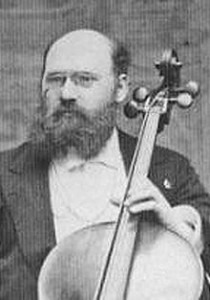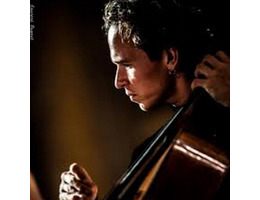
Tchaikovsky
Credit: http://russiapedia.rt.com/
After Tchaikovsky graduated from the St. Petersburg Conservatory in 1865, he was recruited by Nikolay Rubinstein—brother of Tchaikovsky’s principle teacher Anton Rubinstein—for a post at the new music conservatory in Moscow. The young composer struggled with his teaching assignments, yet nevertheless formed lasting friendships amongst his colleagues. German-born cellist Wilhelm Fitzenhagen held a professorship at the Moscow Conservatory and was widely considered the premiere cellist in Russia. He was the celebrated soloist of the Russian Musical Society and director of the Moscow Music and Orchestral Union. As a member of the Russian Music Society String Quartet, he premiered Tchaikovsky’s three String Quartets and his Piano Trio. Apparently, Fitzenhagen asked Tchaikovsky for a composition featuring the solo cello, and the composer obliged with the Rococo Variations.
Near the end of 1876, Tchaikovsky supplied a short score of his new variations to Fitzenhagen. Since he had no hands-on experience as a cellist, Tchaikovsky asked the performer to make the cello part more idiomatic and virtuosic, while he busied himself with the orchestration. The result of this initial collaboration between composer and performer was first performed in Moscow on 30 November 1877, while Tchaikovsky was recuperating from his failed marriage in Switzerland. Immediately after this premiere performance, Fitzenhagen further modified and adjusted the cello part. However, he also reshuffled the original order of the variations and even jettisoned an entire variation! Forgetting to inform Tchaikovsky of these editorial liberties, Fitzenhagen took the autograph manuscript to the publisher P. I. Jurgenson. Jurgenson was not convinced and wrote to the composer, “Loathsome Fitzenhagen insists on changing your cello piece. He is determined to “cello-ise” your piece and claims you gave him permission. Good God! Tchaïkovski revu et corrigé par Fitzenhagen!”

Wilhelm Fitzenhagen
Credit: Wikipedia
Tchaikovsky: | Fitzenhagen: |
Introduction and Theme | Introduction and Theme |
Variation I | Variation I |
Variation II | Variation II with the ending of Variation V |
Variation III | Variation VI |
Variation IV | Variation VII |
Variation V | Variation IV |
Variation VI | Variation V with the ending of Variation II |
Variation VII | Variation III |
Variation VIII | discarded |
Coda | Coda |
The original Tchaikovsky version was only “rediscovered” in 1941. By then, however, Fitzenhagen’s imaginative reworking—intended to maximize his own exposure—had become part of the standard repertoire. Although the Tchaikovsky biographer David Brown has damned Fitzenhagen’s edition as “deplorably corrupt,” you are still more than likely to hear the Fitzenhagen version in concert today! Too bad we can’t invite composer and performer to the Intimacy of Creativity Festival 2015!
Peter Ilyich Tchaikovsky: Variations on a Rococo Theme for Cello and Orchestra




I just finished hearing–for the first time ever! Mr. Tchaikovsky’s original version. Having heard–just before that! the Fitzenhagen version. And you know–I don’t know what to think. The original version has more Tchaikovsky. Quite a bit more! But Mr. Fitzenhagen has certainly made a tour de force of his own version–with that exciting finale. More of a whang-doodle, knock-’em-all-dead finish than poor Mr. Tchaikovsky was inclined to provide. Maybe–if I listen to and compare BOTH versions for another year–I might come to a more settled conclusion. One would wish a composer’s wishes always and only to be consulted. But Tchaikovsky’s own peremptory dismissal of the problem rings in my ears. “The devil take it–let it stand!” And so, somebody murmured, “Okay.” And let it stand.